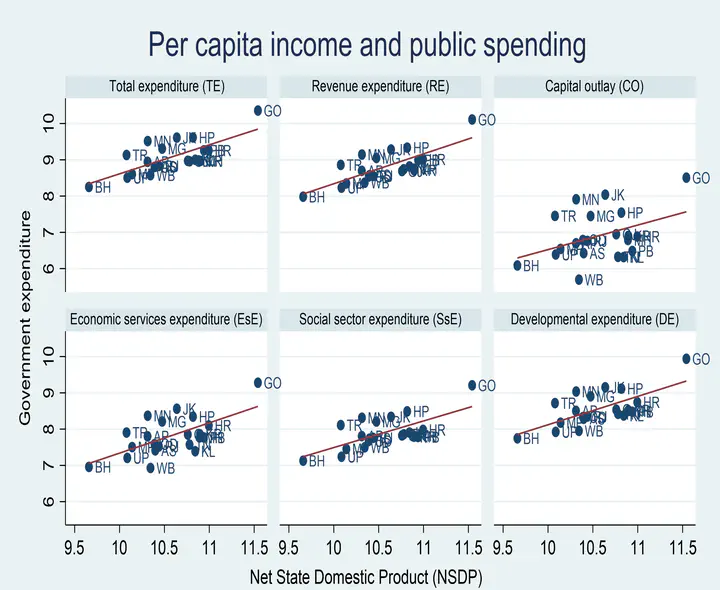Linkage between Income and Government Expenditure at Indian Sub-nationals: A Second-Generation Panel Co-integration Techniques
 Image credit: admin
Image credit: admin
Abstract
The present paper examines whether the Wagner’s law that represents the long-run relationship between income and public expenditure holds at the subnational level in India. The paper covers 21 Indian States and a time-period of 40 years from 1980-81 to 2019-20. The validity of the law was examined for nine different panels of states broadly under income categories and geographical regions. Unlike first-generation panel techniques which fails to account the aspects of cross-sectional independence and heterogeneity, the present study tests the validity of the Wagner’s law using the second-generation panel unit root method and cointegration approach. The analysis adopts Panel Dynamic Ordinary Least Square to test the evidence of Wagner’s law hypothesis. The findings reveal that Indian states are heterogeneous in terms of public expenditure, and there exists cross-sectional dependence. There also exists a long-run cointegrating relation between state-level income and state-level public expenditure. For the full sample, while this study finds holding Wagner’s law, there is a mixed validity of the law at different panels across income categories and regions. In addition, it is observed that the validity of Wagner’s law in the Indian Subnational context is mainly driven by the high-income major states, and it is more capital outlay centric.